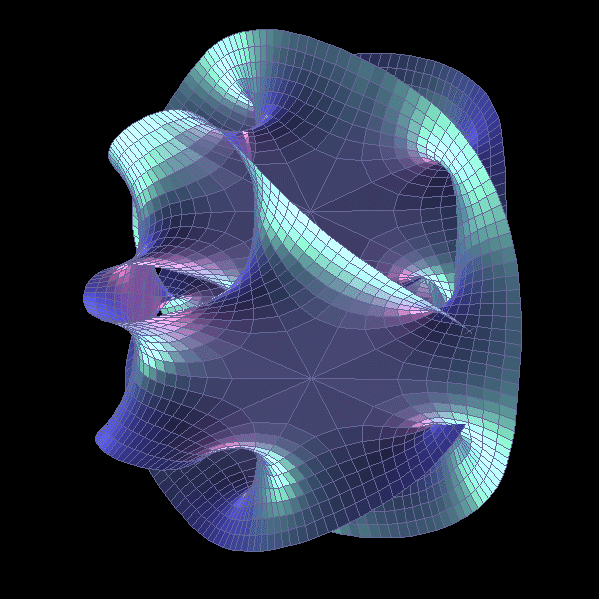
Witten and Seiberg found a way to eliminate certain singularities in a four-dimensional quantum field theory with supersymmetry--an extension of the standard model of particle physics that attempts to incorporate all the forces of nature except gravity. They did it by introducing to the theory a hypothetical particle called a magnetic monopole.
By gradually changing a particular parameter in the equations describing supersymmetry, the theorists could show that this monopole becomes massless right when the equations, in the absence of monopoles, point to infinity as the answer. This approach makes it possible to circumvent troubling singularities and obtain reasonable solutions to the equations.
Strominger asked himself whether miniature black holes carrying an electric charge might play a similar role in string theory. These curious objects are closely related to the black holes of relativity theory and astronomical speculation.
"Ordinary" astronomical black holes are generally characterized by their mass, electric charge, and angular momentum, or spin. In string theory, researchers deal with "extremal" black holes--tiny bodies with mass and charge comparable to those of elementary particles.
Strominger looked at what happens to such a black hole when one varies parameters determining the shapes of the curled-up, six-dimensional spaces that arise in string theory. He discovered that as the shape changes, the mass of a charged black hole dwindles to zero precisely when the singularities he was worried about would arise.
At first glance, the notion of a massless black hole may seem contradictory, but it arises naturally out of the mechanics of string theory. In some situations, a black hole's mass is proportional to its area. Making this area smaller and smaller eventually leads to a black hole with zero mass.
"It's a very special kind of black hole," Greene says. "But it's still sensible to think of it as being a black hole, because it evolved from a massive black hole."
The transformations studied by Strominger also revealed a direct correspondence between extremal black holes and strings. He could avoid the singularities normally encountered in the particular formulation of string theory he was using by treating black holes as strings and strings as black holes.
When Greene and Morrison heard about Strominger's work, they quickly realized there was no barrier to continuing a shape transformation beyond the massless black hole stage. In fact, this stage appeared to mark a transition not unlike that occurring when a solid melts or a liquid freezes.
In the case of water, for example, lowering the temperature turns the liquid to ice. Raising the temperature reverses the process. Although ice and liquid water look and behave differently, they merely represent two phases of the same molecular substance.
Something similar happens as the geometry of the six-dimensional components of string theory gradually changes. At a certain critical value of a shape parameter, one gets a phase transition in which tiny, charged black holes are transformed into strings in specific vibrational states. The vibrating strings, in turn, correspond to various elementary particles.
"When you follow the transition in detail, what appear to be black holes in the first phase--analogous to water--evolve into fundamental particles in the second phase--analogous to ice," Greene says. "That is, black holes reappear as more conventional elementary particles, such as electrons or quarks."
"What wasn't clear, but becomes obvious with this work, is that black holes and elementary particles are really one and the same thing as they smoothly change from one to another," he adds.
The researchers also noted that, at the same moment black holes transmute into elementary particle states, the topology, or basic geometric shape, of the accompanying six-dimensional space changes markedly. Such topological transformations can be as radical as changing a beach ball into a doughnut-shaped ring by ripping a hole in the plastic before reshaping the material into its new form.
Science News, August 26, 1995 by Ivars Peterson




